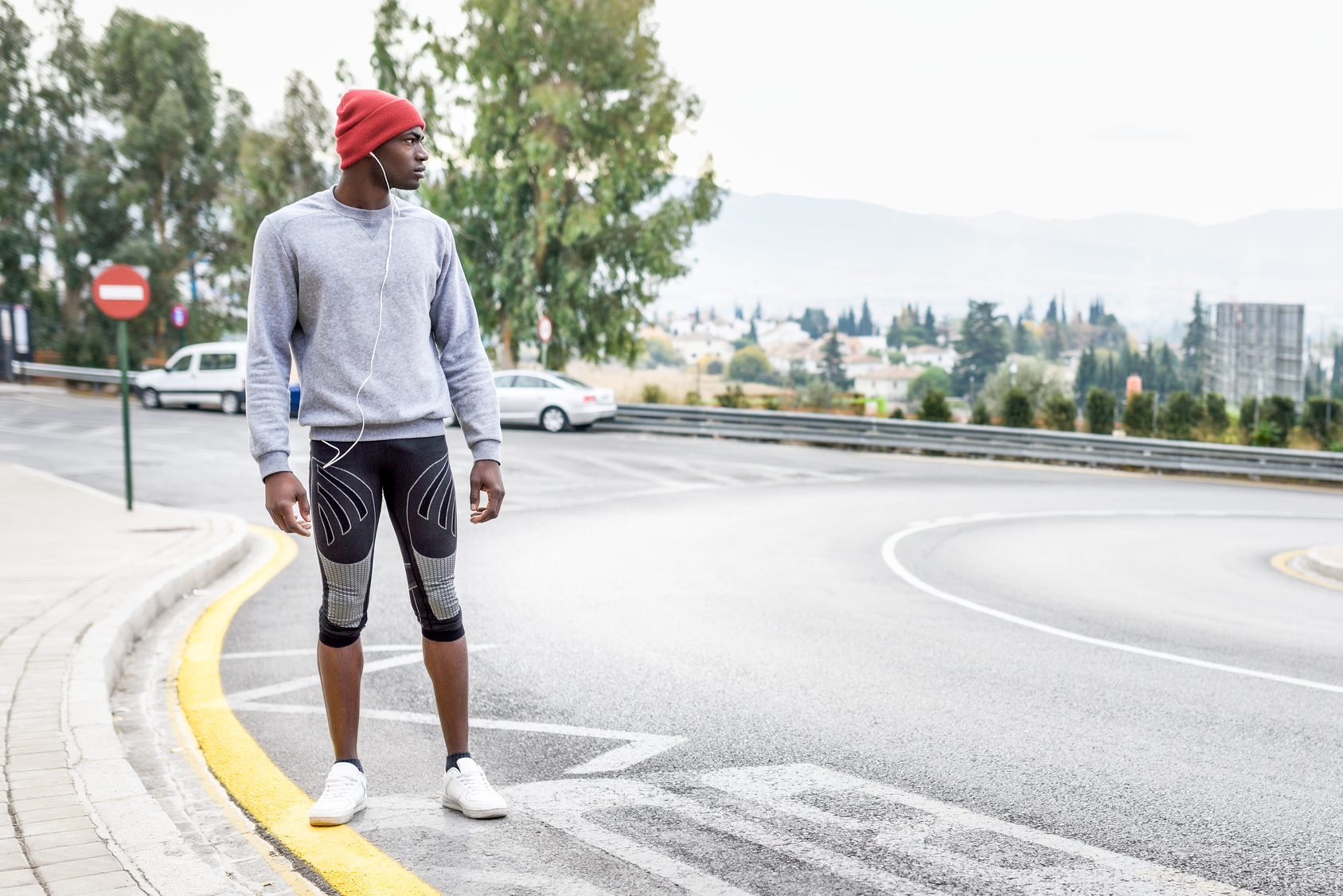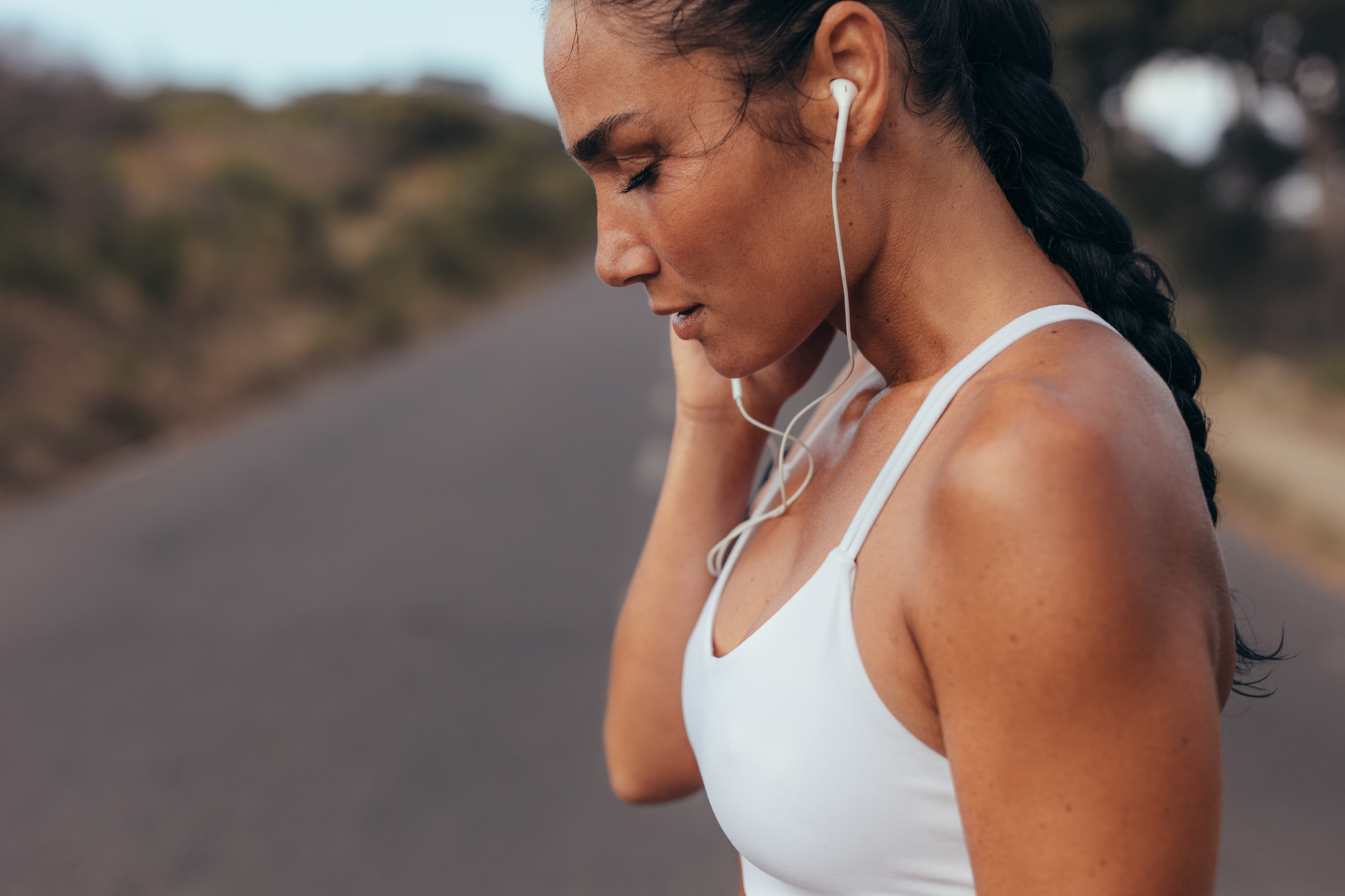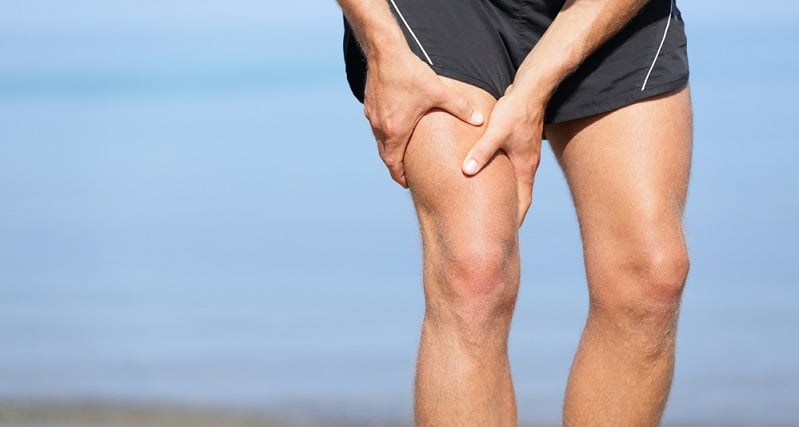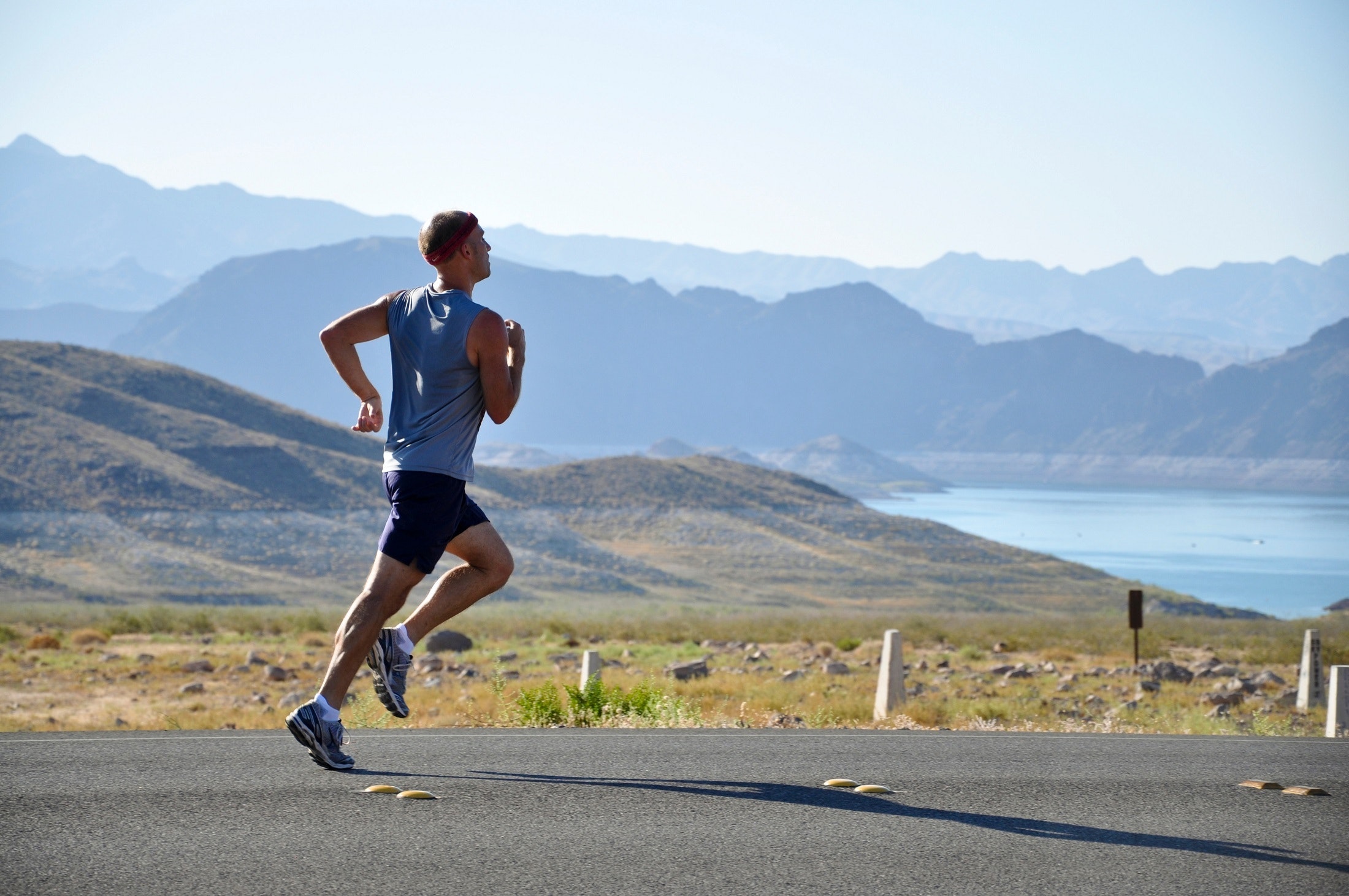Want to improve your running stride? The answer may lie with your music playlist.
Picture this: you’re embarking on a rhythmic adventure, your heart pounding in sync with the pulsating beats of your favorite tunes. Each step is a harmonious dance, propelling you closer to your running goals. But what if I told you that beyond the realm of catchy melodies and infectious rhythms lies a secret to unlocking a truly transformative running experience? Brace yourself, for the answer lies within the very essence of your music playlist.
In the intricate tapestry of running form, one element stands tall as a true game-changer: cadence. Like the conductor of a symphony, cadence holds the power to elevate your performance, enhance your speed, and minimize the time spent airborne. It’s a mesmerizing revelation—an enchanting dance where every step carries you further, faster, and safer.
Research studies have consistently shown that increasing your cadence—measured as the number of steps taken per minute—leads to improved running efficiency and reduced injury risk. It’s the magic ingredient that propels you toward your goals while safeguarding your body from the strains of overexertion.
Now, you may be wondering, how can I improve my cadence? The options are as diverse as the melodies in your playlist. You can engage in purposeful drills, run alongside the steady pulse of a metronome, or even seek the guidance of a running coach who will finesse your form with their expert touch. Yet, amidst these avenues, there lies a simpler yet equally effective method that lies within your grasp.
Dear runner, behold the power of your music playlist. By embracing the rhythms, melodies, and tempo of your chosen tracks, you can tap into an inherent cadence that complements your stride. It’s a transformative experience—a marriage of music and movement that propels you forward, effortlessly syncing your steps with the harmonies that flow through your ears.
In today’s article, we dive deep into the intricate connection between music and cadence, unraveling the secrets to harnessing this powerful synergy. Discover how each beat can propel you to new heights, allowing you to run faster, stronger, and with a reduced risk of injury. The possibilities are tantalizing, promising a running experience that transcends mere exercise and ventures into the realm of an awe-inspiring performance.
What Is Running Cadence
Before we delve into the intricate dance between music and stride, let us first uncover the essence of cadence and its profound significance in your running journey.
In its simplest form, cadence is the divine choreography of your steps—a reflection of the number of strides you take within a specific timeframe. It is a metric that breathes life into your runs, allowing you to measure your efficiency and progress. Typically expressed in steps per minute (SPM), cadence holds power to transform your running experience, from the average non-elite runner to the graceful elite athletes that inspire awe.
As you venture forth, seeking enlightenment in your cadence, it is essential to understand the baseline from which you can soar. Non-elite runners often find their cadence within the range of 155-170 strides per minute, while elite athletes effortlessly glide at a rhythm of 180-190 strides per minute. To determine your own cadence, you need only count the number of times your right foot gracefully kisses the ground within a single minute, then double it to encompass the symphony of both feet.
The Importance Of Running Stride
It is widely believed that increasing your cadence can unlock a world of improvements—a path strewn with enhanced technique, heightened speed, and a reduced risk of injury. Picture this: as your stride rate quickens, the tendency to overreach diminishes, allowing you to glide effortlessly towards newfound speed and grace. But there’s more to the tale than meets the eye.
By increasing the number of steps you take while running, you reduce the time spent airborne—a symphonic interplay that harmonizes with your muscles and joints, cushioning them from the impact of each stride. This reduction in impact holds the key to minimizing the risk of injury, allowing you to dance through your running endeavors with grace and resilience.
Still skeptical? Let us turn to the halls of knowledge, where the researchers from the University of Wisconsin embarked on a journey to unravel the impact of increased cadence. Their findings resound like a triumphant crescendo, revealing that even slight increments in cadence can have a profound effect on the strain placed on knee and hip joints. The melody of their research echoes the truth—by embracing a higher stride rate, you can lighten the load on your body, potentially preventing injury and safeguarding your running future.
The Science of The Impact of Music of Running Cadence
Scientific evidence plays a crucial role in understanding the impact of music on running cadence and form.
Several studies have explored the relationship between music and running performance. For example, a study published in the Journal of Sports Sciences (Smith et al., 2017) examined the effects of music tempo on running cadence and found that matching the music tempo to an individual’s preferred running cadence resulted in improved running efficiency and reduced perceived exertion.
Another study conducted by Karageorghis and colleagues (2019) demonstrated that synchronous music, which aligns with a runner’s stride, can enhance running performance and psychological aspects such as motivation and mood.
Running Stride and Music
Chances are your current cadence is lower than optimum—unless you’ve already worked on improving it or are really lucky.
If not, then it’s time to bring your cadence up to speed—literally.
Here’s what to do next.
Once you have determined your current cadence, add a faster-paced song to your running playlist so you can keep on improving.
The rule is to do it in a slow and gradual manner. Trying to increase your cadence too fast can, in reality, increase your risk of injury instead of lowering it. That’s bad news.
What’s The Best Running BPM?
Again, this depends on your fitness level, running skill, and training goals.
Making the jump from 150 to 180 spm is not a good idea—even though 180 spm is the ideal stride rate for running.
As you lace up your running shoes, it’s essential to recognize that your current cadence may be lingering below the realm of optimum. Unless you’ve already dedicated yourself to improving it or are blessed with extraordinary fortune, it’s time to set your sights on bringing your cadence up to speed—quite literally.
The Plan
Once you have determined your current rhythm, a world of opportunity awaits. Take a leap forward and introduce a faster-paced song to your running playlist, infusing your strides with a newfound energy. But heed this cautionary tale, for progress must be approached with patience and caution. Trying to increase your cadence too rapidly can, regrettably, lead to an elevated risk of injury—an outcome we must diligently avoid.
How To Make Your Running Playlist For The Ideal Stride
So, what is the ideal running BPM, you may ask? The answer dances upon the tapestry of your fitness level, running expertise, and training aspirations. While 180 spm stands as the golden standard for stride rate, leaping from 150 to 180 in one fell swoop is not advised. Instead, let the music guide you towards optimal cadence. Seek songs within the 170-180 BPM range, allowing your strides to synchronize harmoniously with the pulsating beats. However, if your current cadence leans towards the slower end—which is often the case for beginners—begin with songs ranging from 150 to 160 bpm, gradually building up from there.
Now, let us forge a plan to elevate your cadence and weave a seamless union between music and motion. Armed with the knowledge of your current leg turnover, select a playlist that will fuel your ambition.
Add 5 to 10 percent to your current cadence, setting a new goal to strive towards. For instance, if your current leg turnover measures 155 steps per minute, a 5 to 10 percent increase would bring you to a range of 163 to 170 SPM.
With this new rhythm in mind, curate a collection of songs that match your desired cadence and embark on this melodic journey. Remember, the key is to allow the music to guide you effortlessly towards your stride goal, without dwelling too much on the technicalities.
Warm-up: Two To three songs
Kick things off with a couple of your favorite tunes for your warm-up. I’d recommend songs that help you find your groove and ease into your workout.
Cadence Training: two-three three songs
Try to keep your new cadence for only short distances during your runs. You’re, after all, training your body to get used to the new stride rate. So don’t chew more than you can swallow.
Instead, adopt the gradual approach.
Break and Recovery: One Song
Give your body a break from the drill by opting for a song here to relax and run easy.
Cadence Drill: Two songs
Pick another two songs that are within your new cadence range and aim to hit your goal cadence, focusing on short steps and quick feet.
Cooldown – Two to three songs
Finish your run with a few favorites. Simply focus on your form and slowly bring your run to a stop. Rafting Your Musical Journey: A Playlist to Propel Your Strides.

General Tips For Running and Cadence
Before you start using music to improve your cadence, please take the following measures to make the most out of the experience while staying injury free and maximizing performance.
Pay Attention
When running outdoors, it is crucial to be aware of your surroundings, including traffic, pedestrians, obstacles, and potential hazards. These factors require constant attention to ensure your safety. Running with music at high volumes or becoming too engrossed in the music can diminish your ability to hear and react to these environmental cues, increasing the risk of accidents or injuries.
Pace Properly
Maintaining a consistent pace is key for optimizing your performance and avoiding burnout or premature fatigue. Without proper awareness of your pace, it can be challenging to regulate your effort and maintain a steady rhythm. Music can sometimes influence your tempo, causing you to unintentionally speed up or slow down, which may disrupt your desired pacing strategy.
Improve Your Form
Maintaining proper running form is essential for efficiency, injury prevention, and optimal performance. When you’re focused on the rhythm and beat of the music, it can be easy to lose focus on your running technique. Neglecting proper form for an extended period can lead to muscle imbalances, overuse injuries, and decreased efficiency.
Volume Control
Keep the volume at a moderate level that allows you to hear external sounds while still enjoying your music. Consider using open-ear headphones or bone-conduction headphones that allow ambient noise to reach your ears.
Strategic Use of Music
Incorporate music during certain parts of your run, such as long, steady-state runs or low-intensity recovery runs, where external distractions and intense focus on form are less critical. Alternatively, reserve music for indoor treadmill runs where the environment is controlled.
Periodic Checks
Regularly check in with your surroundings, pacing, and form while running with music. Take brief breaks from the music to tune into your body, listen for approaching vehicles, and ensure your form is aligned
Music and Running Stride – The Conclusion
As you can see, improving your running cadence can be simple as listening to your favorite songs and trying to sync your stride rate with the tunes.
So sift through your music library and choose the tunes that will motivate you to run.
Please feel free to leave your comments and questions in the section below.
In the meantime, thank you for dropping by.
Keep training strong.
David D.

















